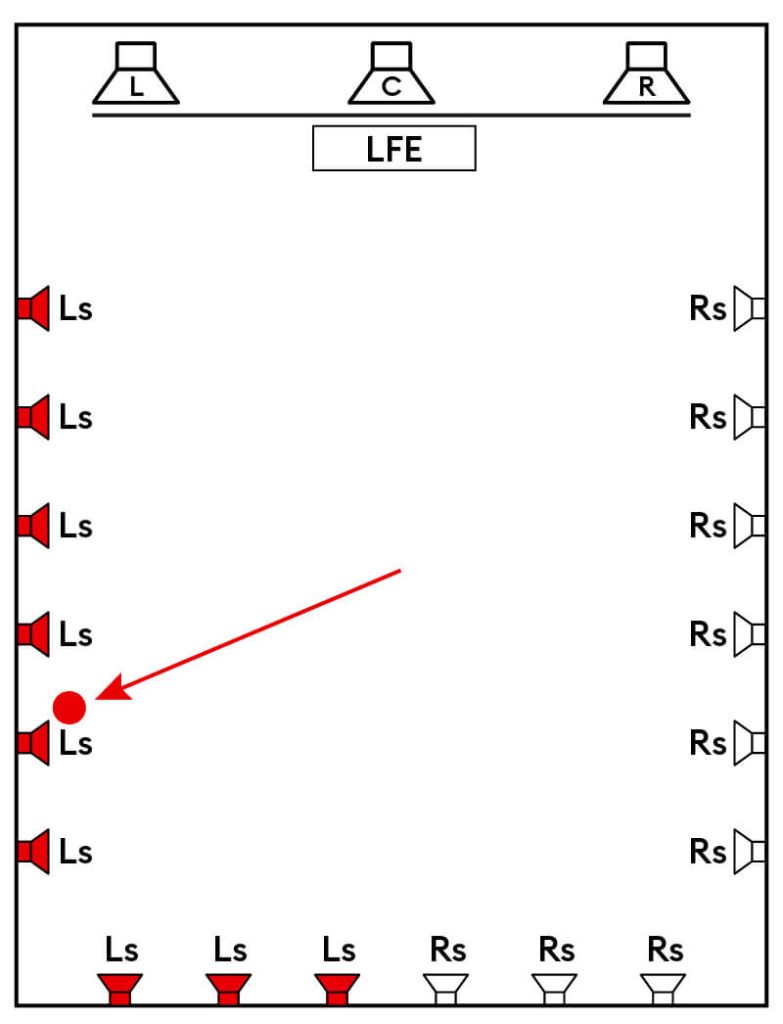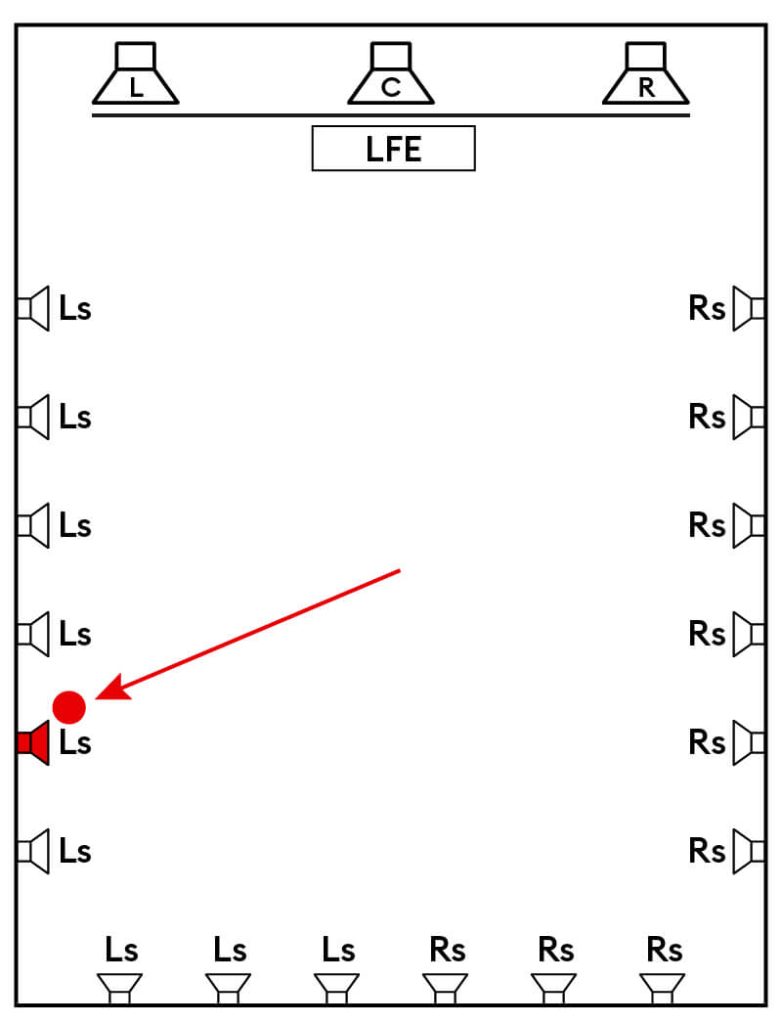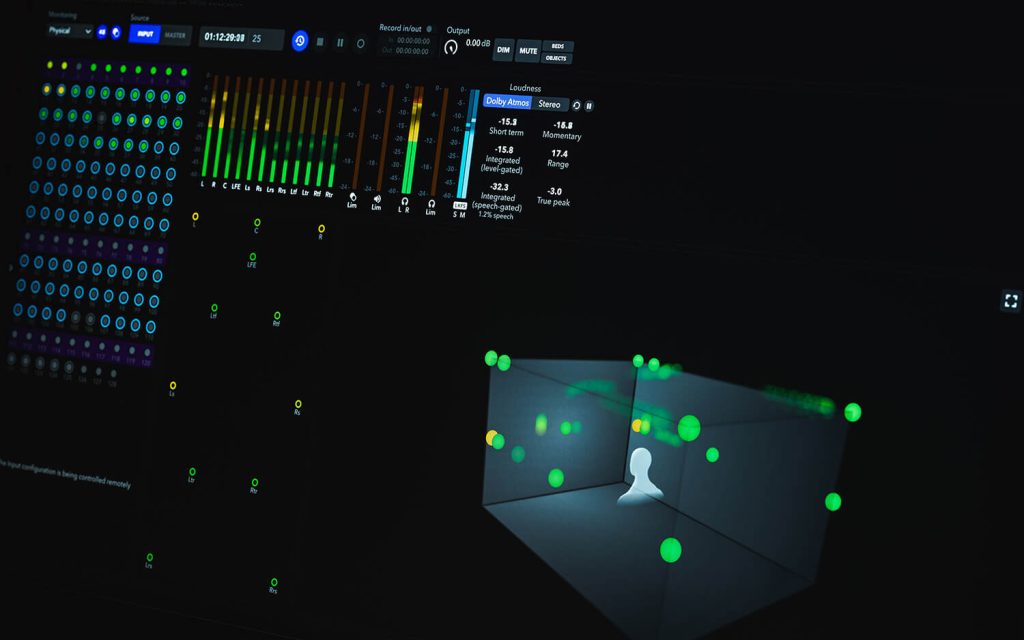The world of audio format has undergone a remarkable transformation in recent years, especially with the introduction of technologies like Dolby Atmos. In this context, a crucial question emerges: Channel-based vs. object-based audio format. In the channel-based format, audio signals are assigned to predefined speakers, resulting in a fixed channel assignment regardless of the playback environment. On the other hand, the object-based audio format allows for more flexible and precise control of sound reproduction by using metadata to precisely position audio signals in space. In this article, we’ll take a closer look at the differences between these two approaches and how they fundamentally change the way we experience audio.
In a channel-based format, the channels of an audio file are assigned to predefined speakers. The two audio tracks of a stereo file are assigned so that the first audio track is on the left speaker channel and the second audio track is on the right speaker channel. This does not change, no matter on which device this file is played. The same applies to common surround formats such as 5.1 or 7.1. A 5.1 audio file contains six audio tracks: L, R, C, LFE, Ls and Rs. The assignment to the speaker channels is already defined by the designation of the individual tracks. If a 5.1 file is played back on a system that does not correspond to this arrangement and, for example, only has a stereo configuration with left and right channels, only the left and right channels are audible. The C, LFE, Ls, and Rs tracks are ignored and remain muted.
Even before the introduction of Dolby Atmos, there were audio formats, such as the Auro-3D format, which created the feeling of being enveloped in sound with speakers on the ceiling. However, these were channel-based, so a suitable file, with the appropriate number of channels, had to be generated for each system.
Dolby Atmos also takes advantage of this type of fixed multichannel arrangement. There, they are referred to as beds. A bed is always channel-based and can occur in any configuration, but at most up to 7.1.2.
The following graphic shows the signal distribution in a movie theater with a 5.1 sound system.
As can be seen, the 18 surround speakers are divided into two halves — left-surround and right-surround. Both surround signals are reproduced equally via nine speakers. This makes it difficult to localize individual signals in the surround. To make this possible, Dolby Atmos offers so-called objects in addition to the beds. An object is an audio channel that also contains metadata in the form of X, Y and Z coordinates.
Z coordinates, which makes exact positioning in the room possible. This means that loudspeakers that previously only functioned within a bed can be controlled individually, allowing signals to be localized more sharply and precisely.
The decision as to which loudspeakers a signal will sound from is only made at the respective playback location. Until then, all audio channels and the corresponding metadata are packed in a container. Since there is no predefined assignment to speakers, this concept is arbitrarily scalable and enables playback on different systems equally.
To play a Dolby Atmos file, a device capable of doing so is needed that knows the speaker configuration at the respective location. The device that decodes the Dolby Atmos file is also called a renderer by Dolby. It unpacks the signals and places them in space based on their metadata. Accordingly, the vectorial direction from which a sound is mapped is the same in every room. The physical speakers from which the signal is reproduced depend on the speaker configuration and differ from room to room. The following figures illustrate the difference between reproducing a signal in a 5.1 Bed and as an object. When placed in a Bed, the signal is reproduced equally across the entire speaker array. When used as an object, on the other hand, the signal sounds from only one speaker.





